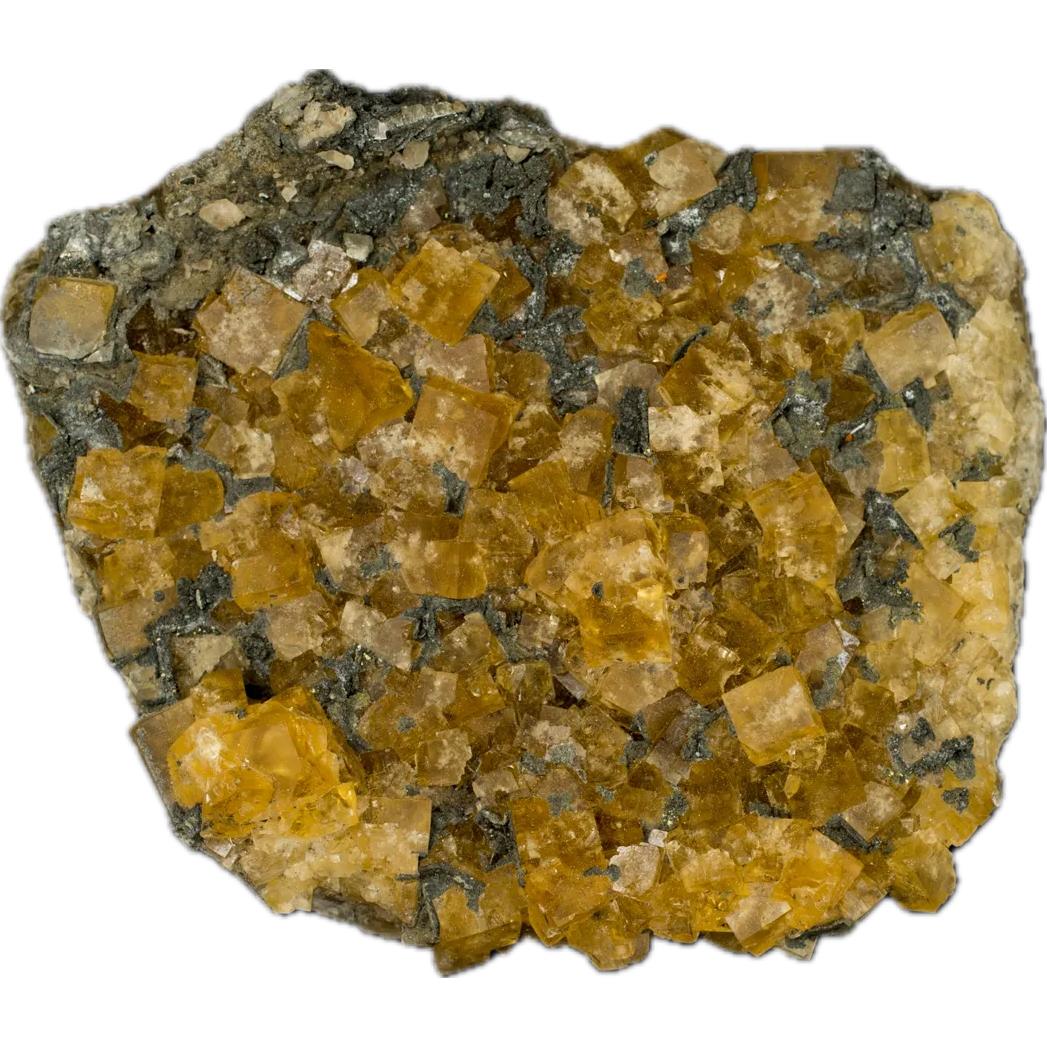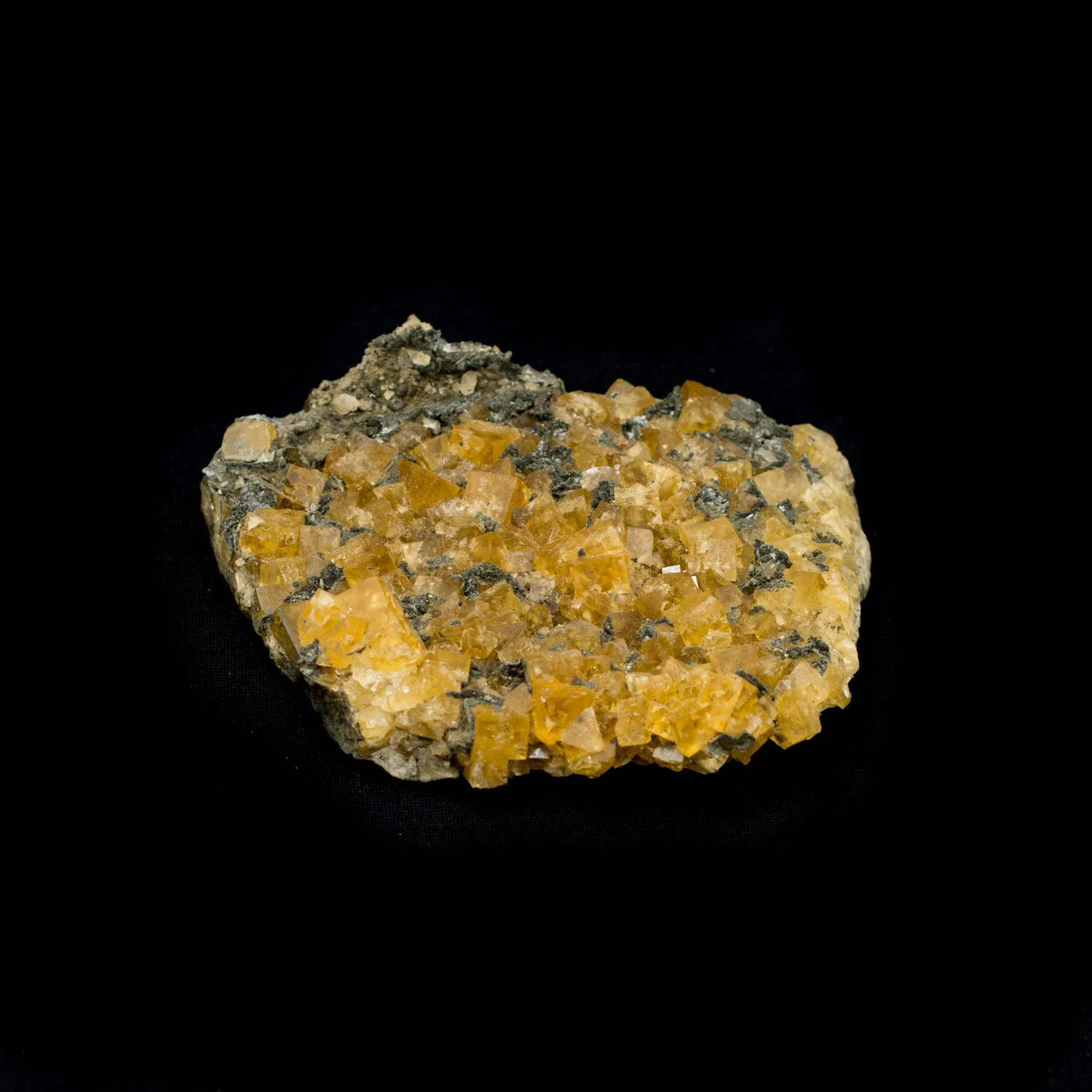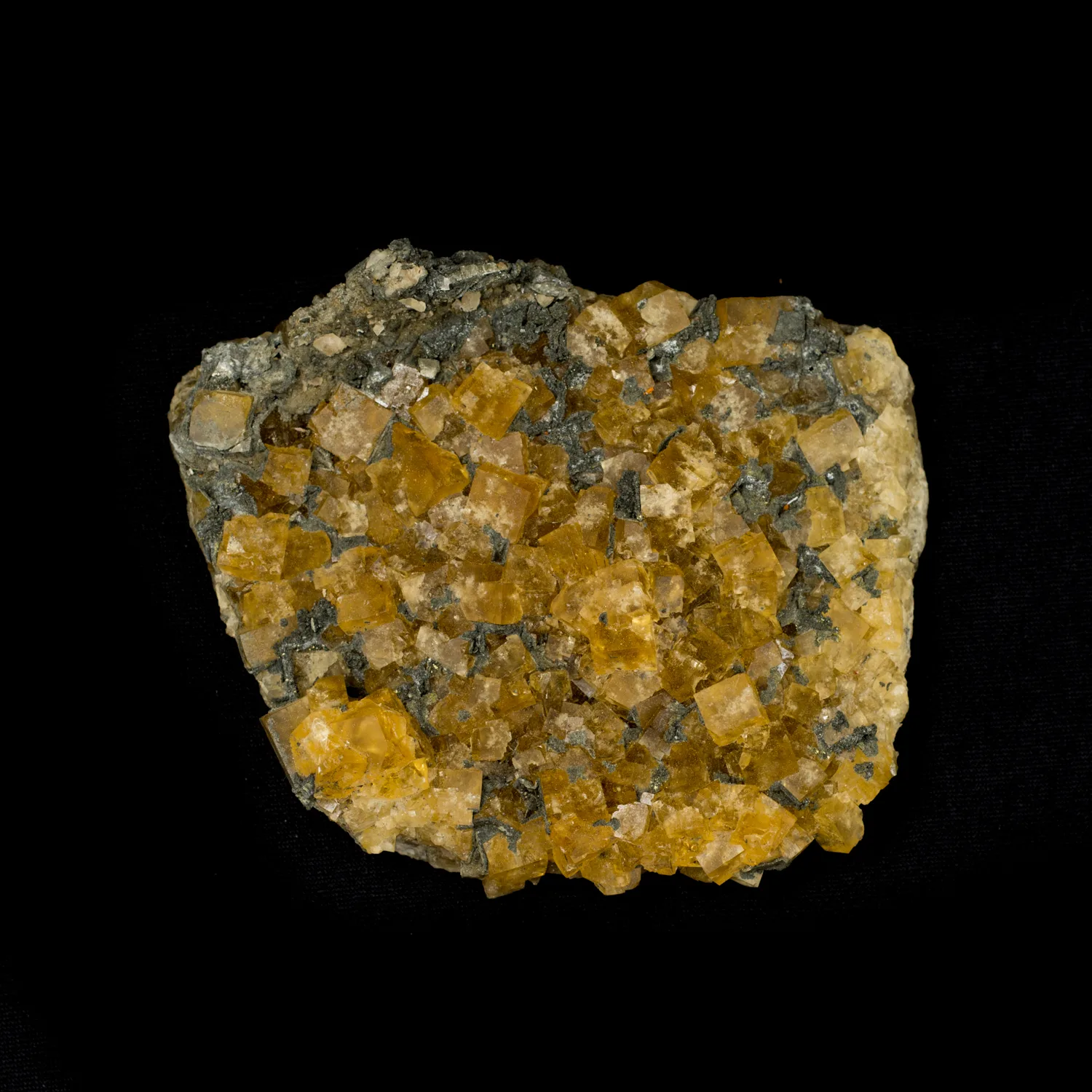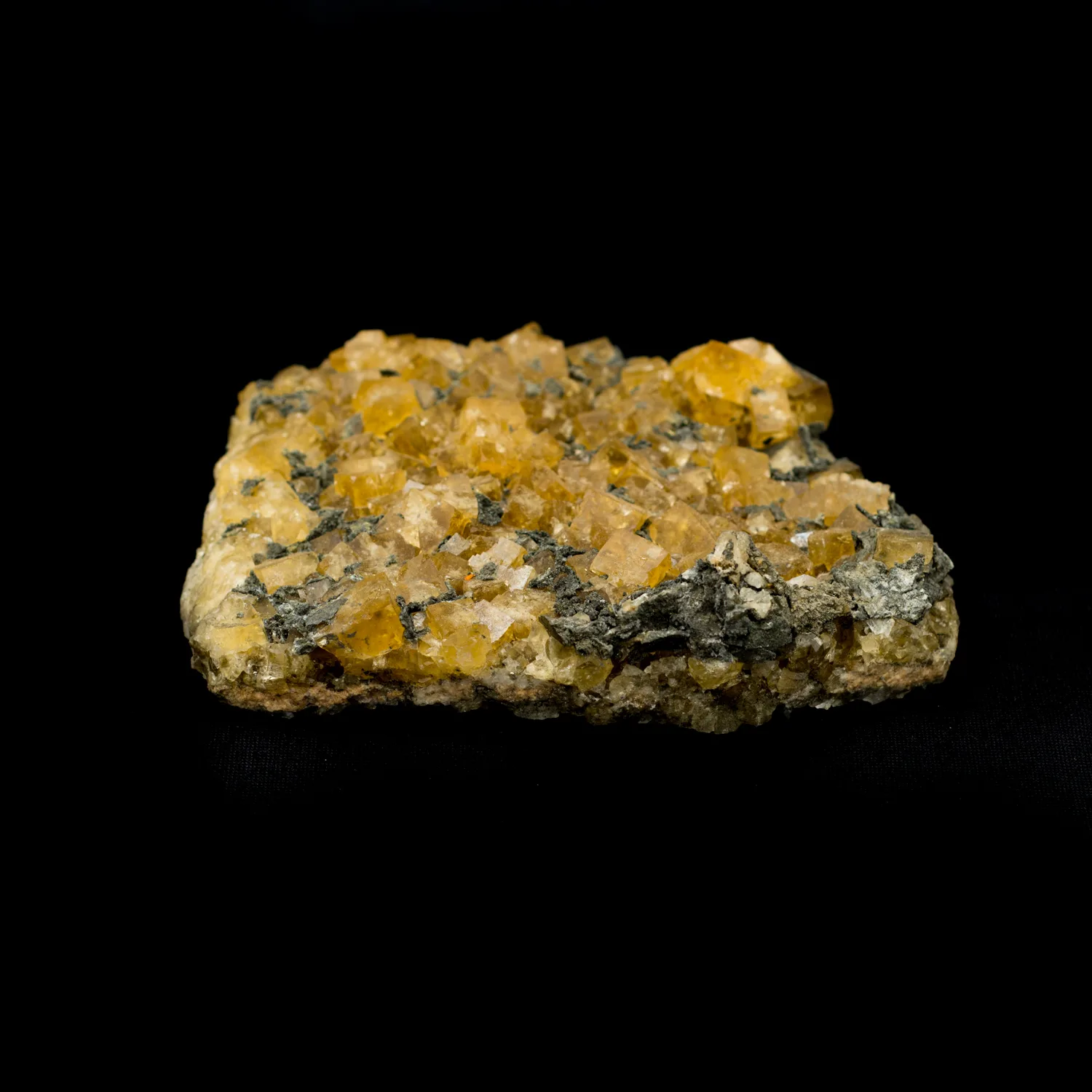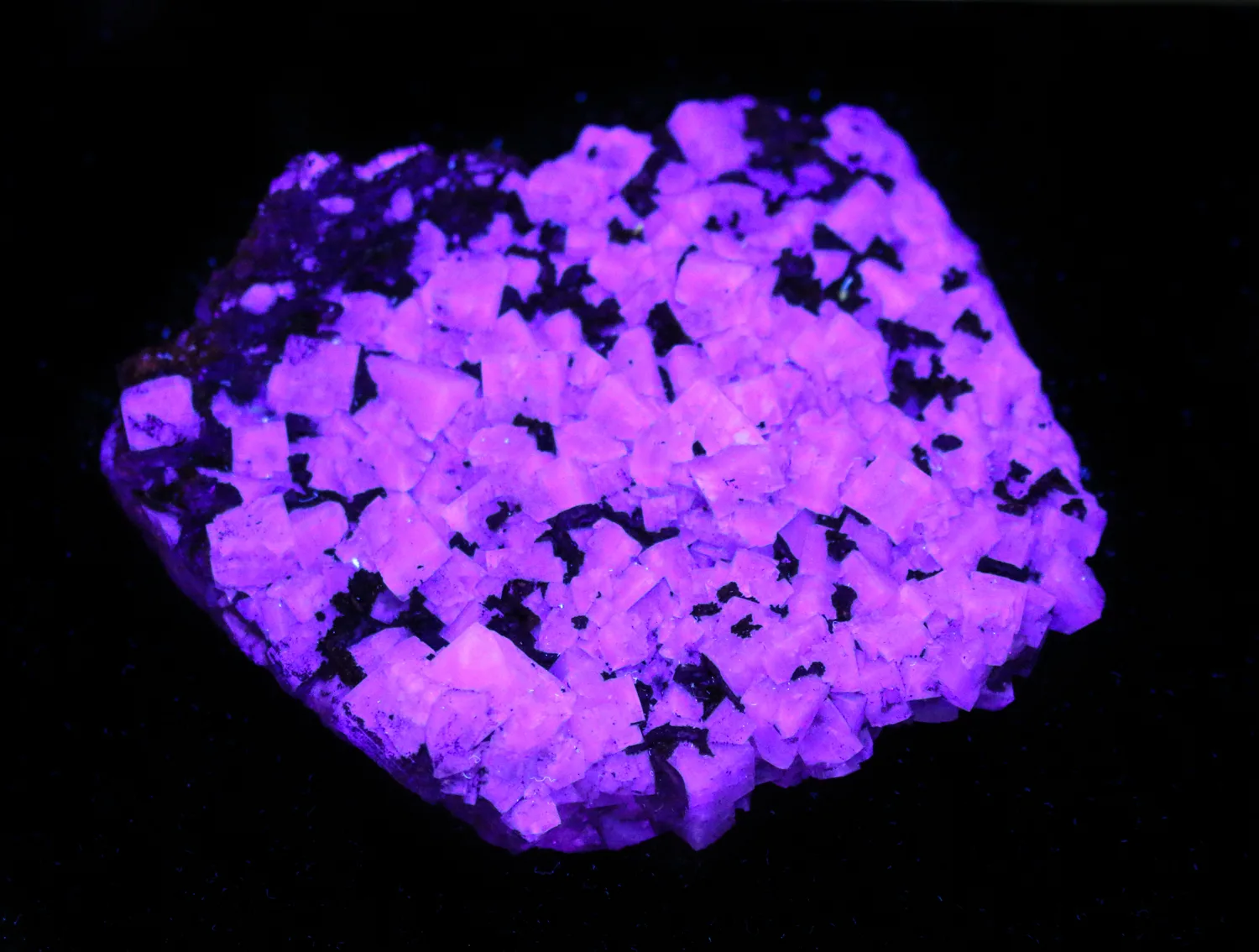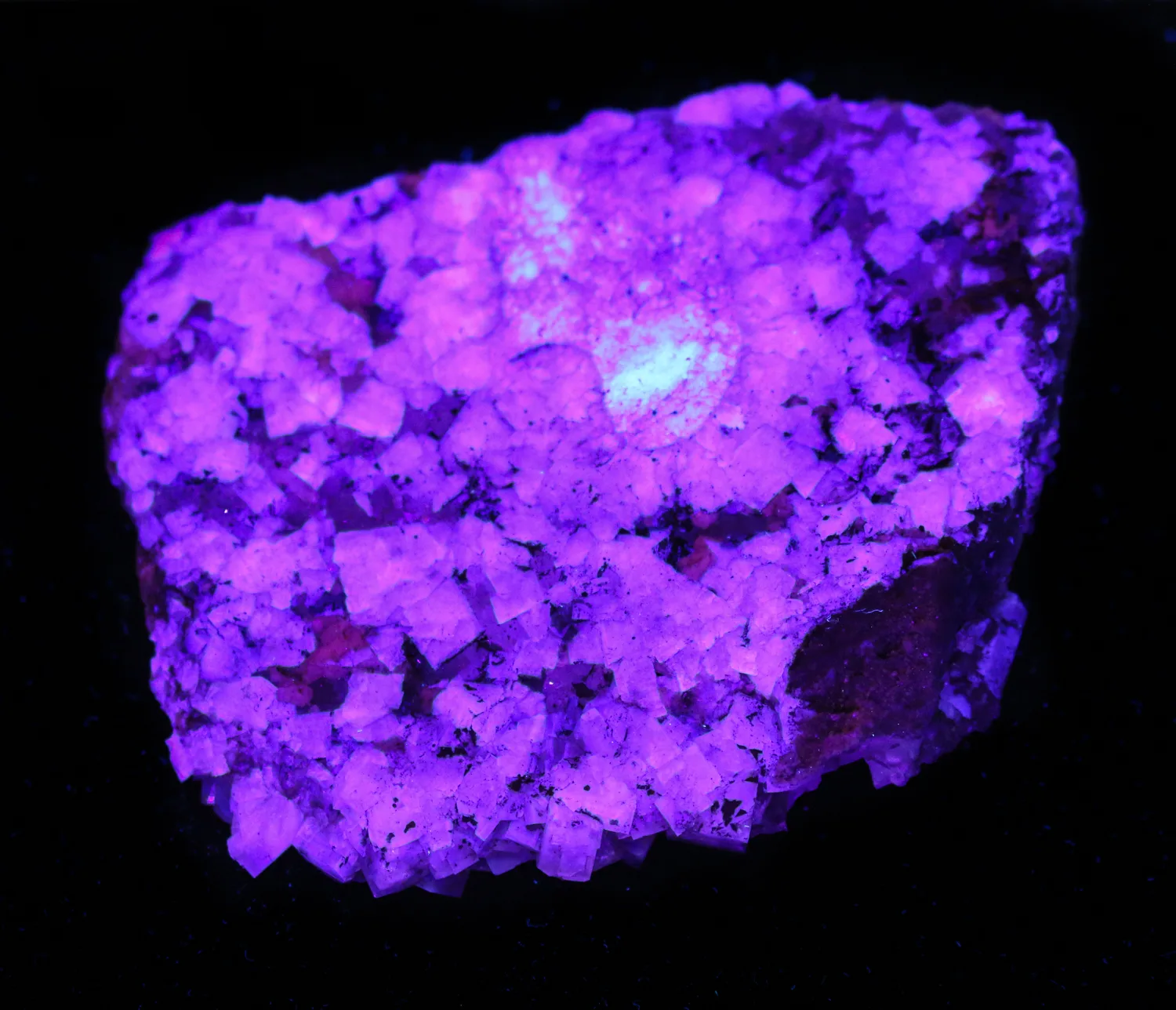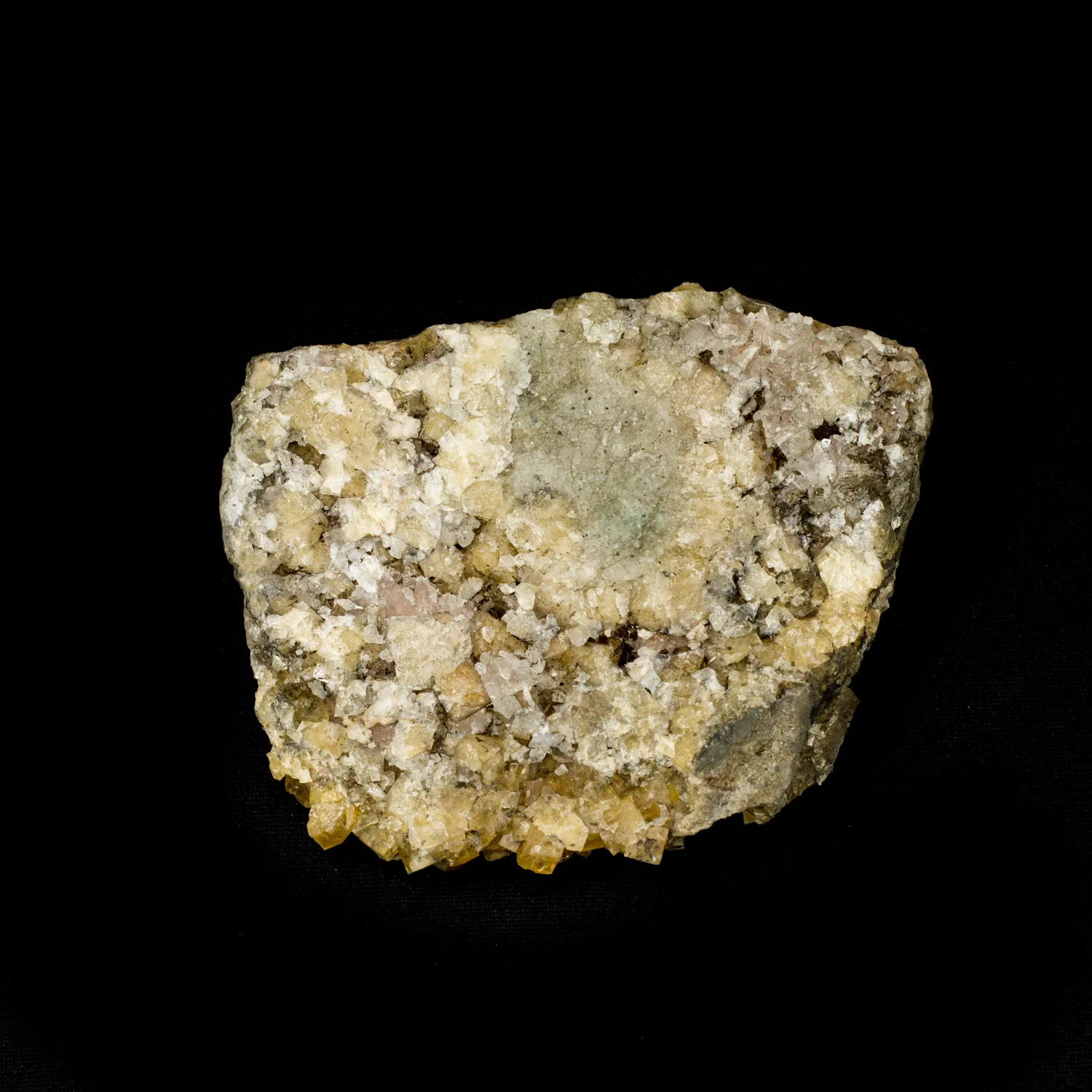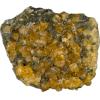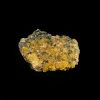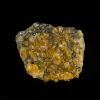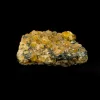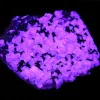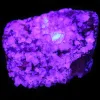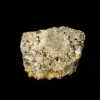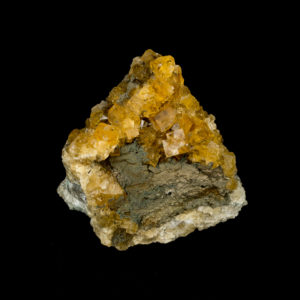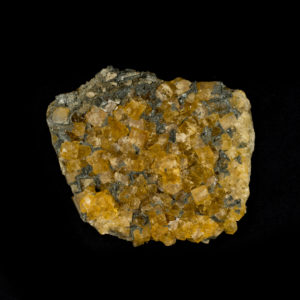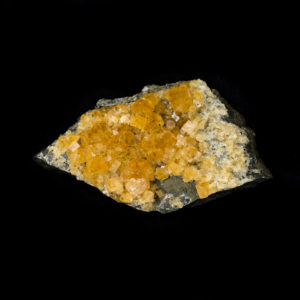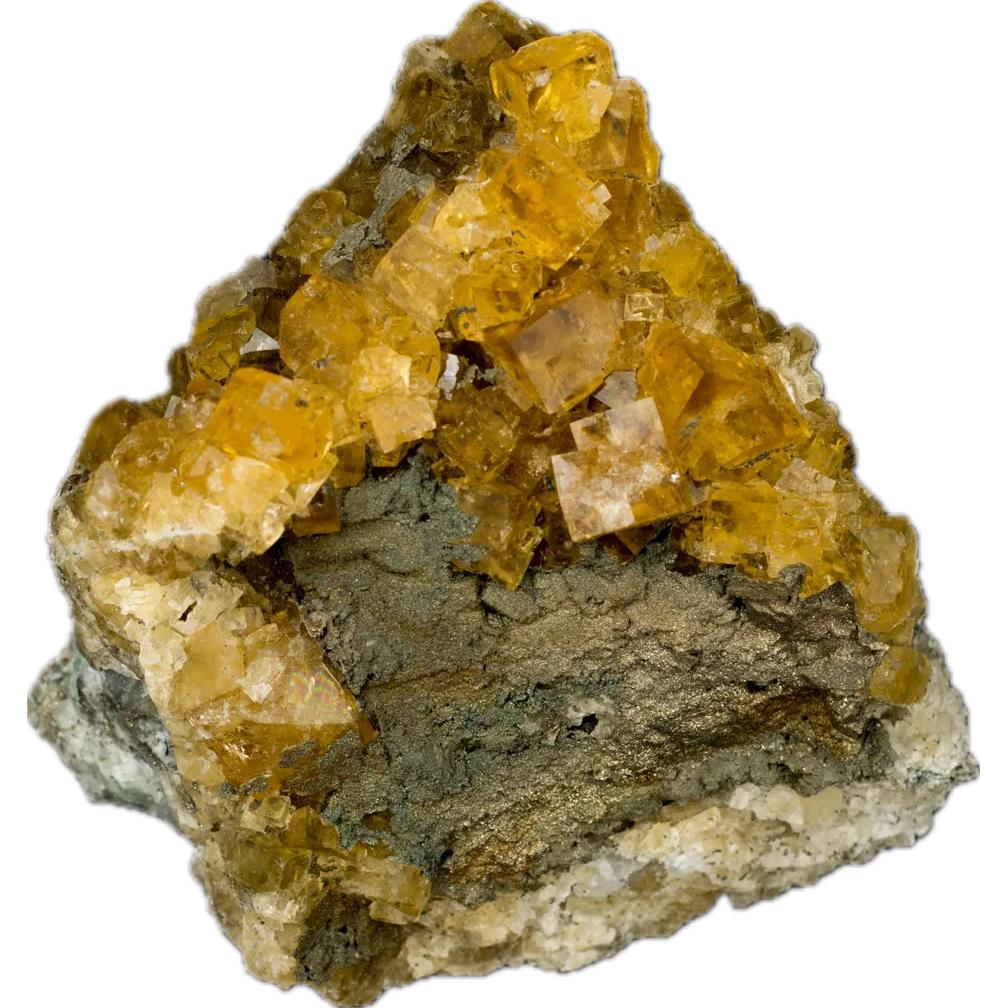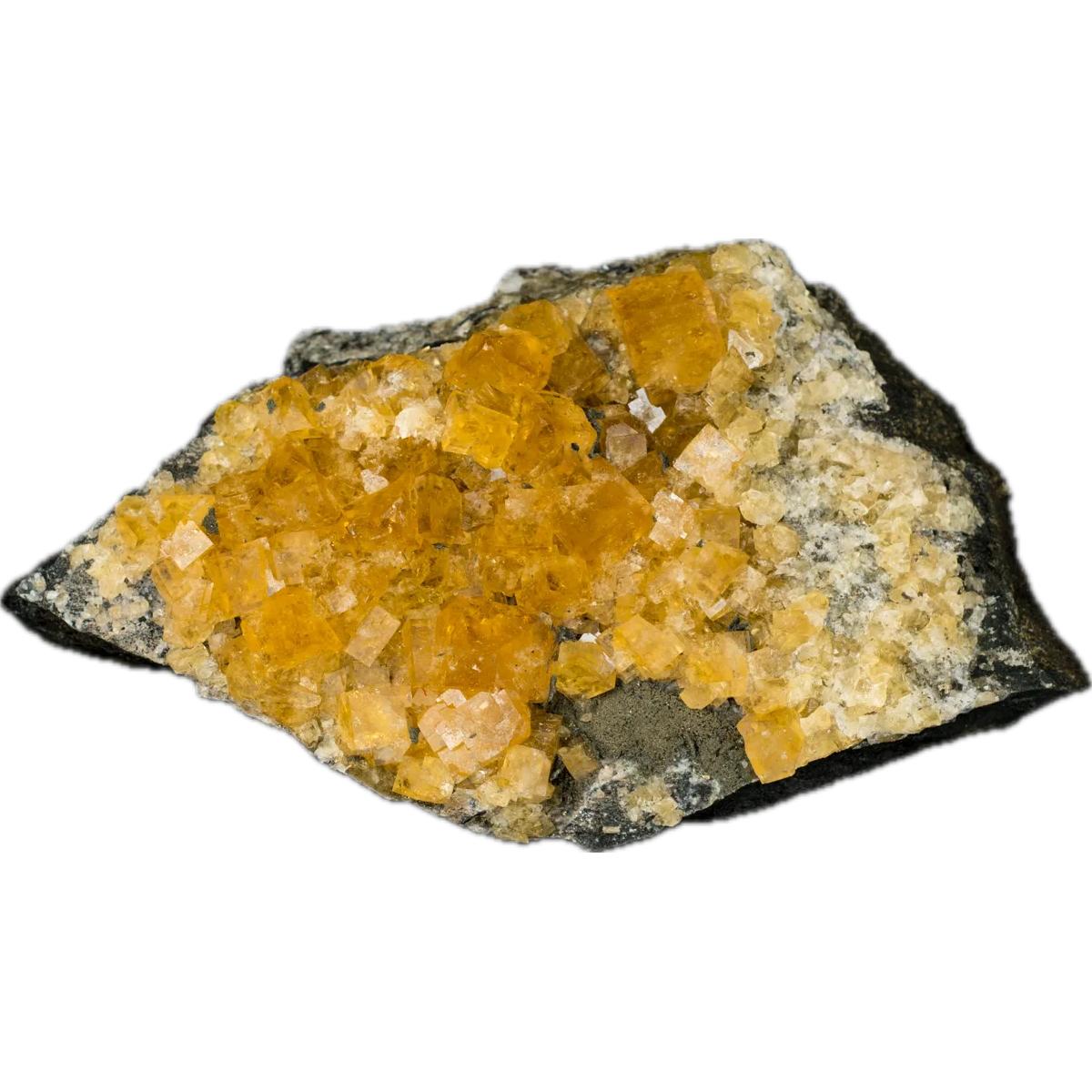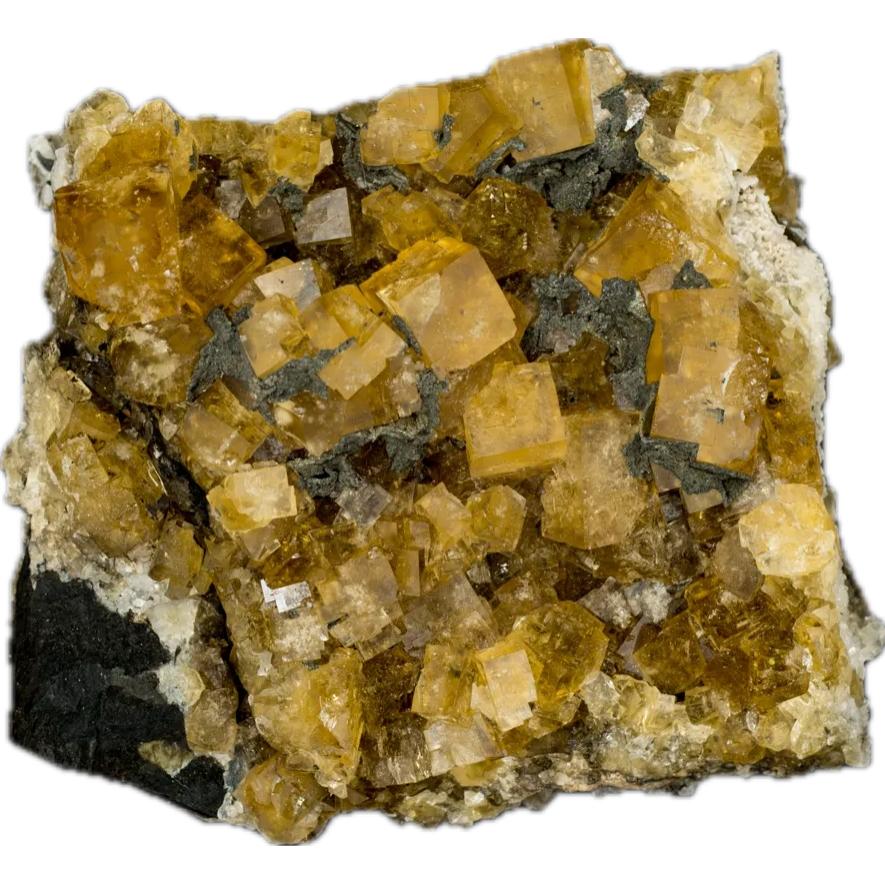Fluorite is a mineral with a veritable bouquet of brilliant colors. Fluorite is well known and prized for its glassy luster and rich variety of colors. The range of common colors for fluorite starting from the hallmark color purple, then blue, green, yellow, colorless, brown, pink, black and reddish orange is amazing and is only rivaled in color range by quartz. The many colors of fluorite are truly wonderful.
The rich purple color is by far fluorite’s most famous and popular color. It easily competes with the beautiful purple of amethyst. Often specimens of fluorite and amethyst with similar shades of purple are used in mineral identification classes to illustrate the folly of using color as the sole means to identify minerals. The blue, green and yellow varieties of fluorite are also deeply colored, popular and attractive.
The rarer colors of pink, reddish orange (rose) and even black are usually very attractive and in demand. Most specimens of fluorite have a single color, but a significant percentage of fluorites have multiple colors and the colors are arranged in bands or zones that correspond to the shapes of fluorite’s crystals. In other words, the typical habit of fluorite is a cube and the color zones are often in cubic arrangement.
To top it all off, fluorite is frequently fluorescent and, like its normal light colors, its fluorescent colors are extremely variable. Typically it fluoresces blue but other fluorescent colors include yellow, green, red, white and purple. Some specimens have the added effect of simultaneously having a different color under long-wave UV light from its color under shortwave UV light. Some will even demonstrate phosphorescence in a third color! The blue fluorescence has been attributed to the presence of europium ions. Yttrium is the activator for the yellow fluorescence.
Green and red fluorescent activation is not exactly pinned down as of yet, but may be due to the elements already mentioned as well as other rare earth metals; also manganese, uranium or a combination of these. Even unbonded fluorine trapped in the structure has been suggested. The word fluorescent was derived from fluorite since specimens of fluorite were some of the first fluorescent specimens ever studied.
The thermo-luminescence is green to blue-green and can be produced on the coils of a heater or electric stove top. Once seen, the glow will fade away and can no longer be seen in the same specimen again. Fluorite has other qualities besides its great color assortments that make it a popular mineral. It has several different crystal habits that always produce well formed, good, clean crystals.
The cube is by far the most recognized habit of fluorite followed by the octahedron which is believed to form at higher temperatures than the cube. Although the cleavage of fluorite can produce an octahedral shape and these cleaved octahedrons are popular in rock shops the world over, the natural octahedrons are harder to find. A rarer habit variety is the twelve sided dodecahedron however it is never seen by itself and usually modifies the cubic crystals by replacing the edges of the cube with one flat face of a dodecahedron.Yellow Fluorite, UV reactive Morocco
Yellow fluorite from Morocco is a captivating mineral known for its vibrant color, crystal structure, and geological significance. This particular variety of fluorite, with its rich yellow hues, is highly sought after by collectors and enthusiasts alike.
Fluorite, chemically known as calcium fluoride (CaF₂), is a mineral that comes in a range of colors, with yellow being one of the rarer and more desirable variants. The yellow color in Moroccan fluorite is attributed to the presence of certain impurities and trace elements within the crystal lattice. These impurities can include elements like iron, which can influence the color intensity and shade.
The deposits of yellow fluorite in Morocco are primarily found in the northern part of the country, in the regions known for their rich and diverse mineral deposits. The most notable locations are the Sidi Ayad and El Hammam mines. These areas have long been recognized for producing high-quality fluorite specimens, and the yellow variety is among the most prized.
The crystals of yellow fluorite from Morocco often exhibit excellent transparency and a bright, sunny yellow color. The crystals can form in various habits, including cubic, octahedral, and complex interpenetrant twins, which are common for fluorite. The clarity and size of these crystals can vary, but well-formed, transparent crystals are particularly valued in the mineral market.
One of the fascinating aspects of yellow fluorite from Morocco is its fluorescence under ultraviolet (UV) light. Fluorite, in general, is known for its fluorescent properties, and the Moroccan yellow fluorite is no exception. Under UV light, these crystals can exhibit a beautiful fluorescence, often glowing in shades of blue or violet. This property is due to the presence of certain activator elements within the crystal structure that react to UV light.
The mining of yellow fluorite in Morocco is conducted through both artisanal and industrial methods. Artisanal miners often work in small groups, extracting the crystals by hand from veins and pockets within the host rock. These miners play a crucial role in supplying the market with high-quality specimens, as their careful extraction methods help preserve the integrity of the delicate crystals.
Yellow fluorite has several uses beyond its appeal as a collectible mineral. In the industrial sector, fluorite is used as a flux in steelmaking, in the production of hydrofluoric acid, and in the manufacture of certain glass and enamel products. However, the yellow variety, due to its aesthetic qualities, is predominantly valued for ornamental and decorative purposes.
The metaphysical properties of yellow fluorite are also of interest to many people. In crystal healing and energy work, yellow fluorite is believed to have several beneficial properties. It is thought to enhance creativity, increase clarity of thought, and boost confidence and self-esteem. Additionally, it is said to help with decision-making and to promote a positive attitude, making it a popular choice among those who practice these modalities.
Collectors of yellow fluorite from Morocco often seek out specimens that exhibit unique features, such as well-defined crystal faces, exceptional clarity, and vibrant color. These specimens can command high prices in the mineral market, particularly those that are large and free from significant inclusions or damage. The aesthetic appeal of these crystals, combined with their geological and mineralogical significance, makes them highly desirable.
In addition to individual collectors, museums and educational institutions also value yellow fluorite from Morocco for its scientific and educational importance. These specimens are used to study mineral formation processes, crystal growth, and the geological history of the regions where they are found. They provide valuable insights into the conditions that lead to the formation of such beautiful and complex crystals.

